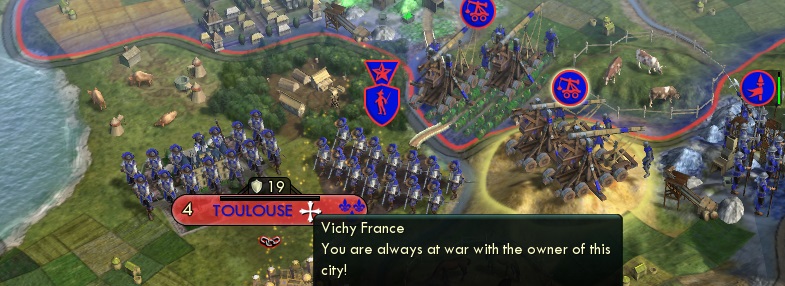“Fall”: how civs leave the game
How many times the winner is already clear by half of the game?
One core purpose of Rhye’s and Fall is that a game is challenging until the very end. In the picture, on the left the power graph of standard game in Civ4 and on the right the power graph in Rhye’s and Fall.

Civs can collapse anytime depending on certain performance parameters (defined as “stability”). In an unstable situation, a civ may lose cities which declare independence. The complete collapse of a computer controlled civ leads to a fragmentation into minor civs or lose territory to neighbour major civs.
In practice, a civ that has become too weak after losing a war will be likely to be wiped out completely. On the other hand, a civ that’s overexpanding will face increasing troubles (proportional to its size) to keep stability under control: in this way, what would have been an obvious winner of the game is in danger of crumbling as well.
This mechanisms also effectively limits the number of alive major players in a game, cutting complexity and loading times.
Rebel faction
The game for the human player does not end with a collapse, but the human's civ stability is in danger too. When the human player’s civ collapses, half of the cities get independent and form a hostile rebel faction of the same civ, represented by inverted colours, and in locked war.
Each rebel civ has a specific name, such as Vichy France, Heavenly Chinese Kingdom or Confederate States of America.

 BACK BACK
|